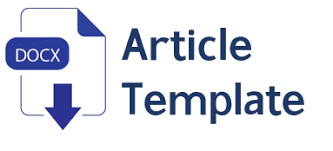The Legal Status Of DP3A'S Recommendations In Child Marriage Dispensation: A Maqāṣid Al-Sharīʿah And Qawāʿid Fiqhiyyah Perspective In Bone Regency
DOI:
https://doi.org/10.18592/albanjari.v24i1.16387Abstract
The high rate of child marriage dispensation cases in Bone Regency underscores the urgency of strengthening child protection within the framework of Islamic family law. In this context, the recommendations issued by the Department of Women’s Empowerment and Child Protection (DP3A) have become a crucial component in judicial considerations at the Religious Court, despite ongoing debates about their legal status. This study investigates the legal standing of DP3A’s recommendations in child marriage dispensation cases using an Islamic legal approach grounded in qawāʿid fiqhiyyah and maqāṣid al-sharīʿah. A qualitative method was employed, with fieldwork conducted at the DP3A office and the Watampone Religious Court. Data were collected through observation, documentation, and in-depth interviews, and analyzed using descriptive qualitative techniques. The findings reveal two key points: first, DP3A’s recommendations are based on government policy aimed at preventing child marriage and are designed to protect four key aspects of maqāṣid al-sharīʿah: the preservation of life (ḥifẓ al-nafs), intellect (ḥifẓ al-ʿaql), wealth (ḥifẓ al-māl), and dignity (ḥifẓ al-ʿirḍ) of the child. Second, although not formally binding by law, the recommendations are treated as mandatory for marriage dispensation applicants at the Watampone Religious Court and are aligned with Islamic legal principles through the lens of qawāʿid fiqhiyyah and maqāṣid al-sharīʿah. These recommendations reflect a constructive synergy between regional policy and Islamic law in promoting child protection. This study contributes to the advancement of contemporary Islamic legal thought and supports the development of local regulations that are more responsive and grounded in public interest (maṣlaḥah).Downloads
Published
2025-07-12
Issue
Section
Articles
License
Copyright (c) 2025 Mustafa Mustafa, Jumarni Jumarni

This work is licensed under a Creative Commons Attribution-ShareAlike 4.0 International License.
Authors who publish with this journal agree to the following terms:
- Authors retain copyright and grant the journal right of first publication with the work simultaneously licensed under a Creative Commons Attribution License that allows others to share the work with an acknowledgement of the work's authorship and initial publication in this journal.
- Authors are able to enter into separate, additional contractual arrangements for the non-exclusive distribution of the journal's published version of the work (e.g., post it to an institutional repository or publish it in a book), with an acknowledgement of its initial publication in this journal.
- Authors are permitted and encouraged to post their work online (e.g., in institutional repositories or on their website) prior to and during the submission process, as it can lead to productive exchanges, as well as earlier and greater citation of published work (See The Effect of Open Access).


































